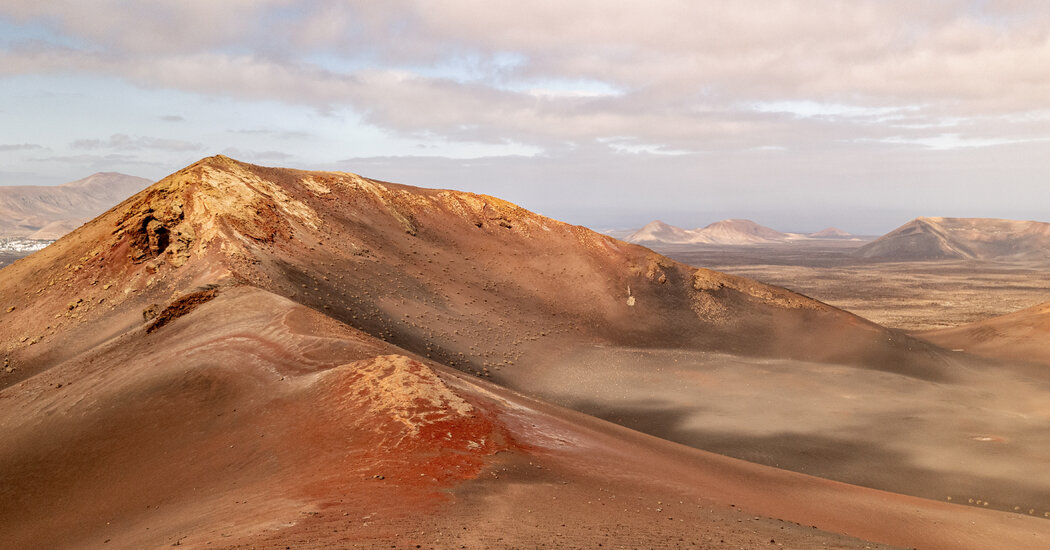“Lanzarote is a place of secrets and mysteries,” the Spanish filmmaker Pedro Almodóvar once said of the place he used as a backdrop for his 2009 film “Broken Embraces.” “After I set foot on the island, the tensions I bring from Madrid disappear, as if this land had healing qualities.”
Mr. Almodóvar’s words, in a 2008 interview with the Spanish newspaper El Diario, kindled my own fascination with Lanzarote, the easternmost of the seven main Canary Islands.
His description also made it sound like the ideal wind-down destination for anyone attending Pride events on nearby Gran Canaria, an island that’s one of the most popular gay destinations in Europe. So this May, as revelers flocked to Gran Canaria, I went to Lanzarote.
After the 45-minute flight from lush, green Gran Canaria, the sere, black and brown landscape came as a shock. To take it all in, I drove up the Montaña de Guanapay, a steep hill about 1,440 feet above the village of Teguise, crowned by the Castle of Santa Bárbara.
It was here at the beginning of the 14th century that Lancelotto Malocello, a Genoese merchant and navigator, had a watchtower built. Malocello left the island 20 years later because of an uprising by the Guanche, the island’s Indigenous Berber people, who were later assimilated into Spanish settlements. But the navigator lives on as the likely source of the name Lanzarote, and the views are still spectacular.
Compared with its much busier and palm-studded sister island, Lanzarote is barren, with occasional low-slung villages of whitewashed houses appearing like cobwebs on the slopes of the mostly dormant volcanoes that created the island. It was a strange place. I loved it immediately.
I also understood why the driest and windiest of the major Canary Islands has quietly become a new hideaway for Spanish and other European creatives, as well as a growing number of Americans, now that there are direct flights from Newark to Tenerife. Lanzarote is a primal spot that scours out your head with vast horizons that resonate with eternity.
A seductive charm
About 80 miles off the coast of Morocco, Lanzarote (Lahn-zah-ROH-tay) shares the renegade aura of longtime L.G.B.T.Q. destinations like Key West, Fla., and Provincetown, Mass., in the United States. Not surprisingly, the island has seduced many artists, writers and celebrities, among them the actor Omar Sharif, the Portuguese novelist José Saramago. César Manrique, a visionary painter and architect and…
Click Here to Read the Full Original Article at NYT > Travel…
